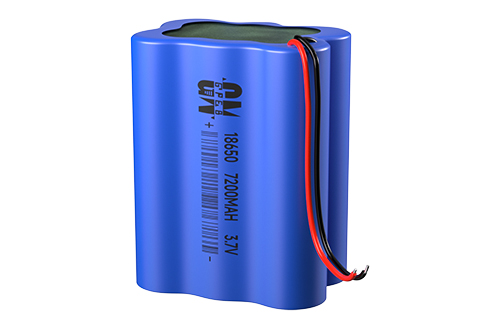

Zhang Guobao, former director of the National Energy Administration of China, recently said that the current main bottleneck in the development of electric vehicles in China lies in the technical field, while policy and environmental factors are also troublesome.
According to the Taiwan Wake-Up News report, although the government’s slogan of developing electric vehicles was once loud, it still feels like it is standing still in Taiwan; similarly, even though China started promoting it from the last national five-year plan, it is still spreading With the cry of "battery technology must first achieve a breakthrough". Zhang Guobao, former director of the National Energy Administration of China, recently said that the current main bottleneck in the development of electric vehicles in China lies in the technical field, while policy and environmental factors are also troublesome.
Battery is core value
Zhang Guobao said in an interview with People's Daily Online that the current development of electric vehicles in China mainly requires breakthroughs in technology, policy, environment and other aspects. Dong Yang, secretary-general of the China Association of Automobile Manufacturers, also recently stated at the China Association of Automobile Manufacturers’ monthly analysis meeting that the development of new energy vehicles in China is still in the exploratory stage.
In terms of technology, Zhang Guobao said that finding energy sources other than gasoline and diesel fuel is the direction of the automotive industry, but there has still been no major breakthrough in battery technology for many years.
For electric vehicles, the battery is the core technology and value, and its weight is as high as 600 kilograms. In China, the driving distance on a single charge is only about 100 kilometers, and the charging time cannot break through the traditional slow charging mode. It has not yet reached the fast charging technology of Tesla electric cars in the United States, which affects the convenience of using electric vehicles.
Charging is inconvenient and difficult to break through
Zhang Guobao also admitted that even with local subsidies, price is still the most important consideration for customers. Firstly, it is inconvenient to use; secondly, maintenance is also inconvenient. Even though charging piles are widely installed in various cities in China, consumers still find charging extremely inconvenient. Data shows that the operating costs of electric vehicles are relatively low, but the initial cost and after-sales service issues are still insurmountable.
Dong Yang pointed out that the development of so-called new energy vehicles in China is still in the exploratory stage. After entering the 12th Five-Year Plan, national subsidy policies related to new energy vehicles have also been delayed. How to promote the healthy development of new energy vehicles in China is still being anticipated by all parties.
However, the bigger contradiction is that China has to admit that the joint venture's technical strength in new energy vehicles is indeed better than that of Chinese brands such as BAIC and SAIC. The development of new energy vehicles in China, especially pure electric vehicles, is not yet mature. We have to enter into technical cooperation with foreign brands. Therefore, they are afraid of being seized by foreign brands and want to prevent entry, but they are worried that it will be detrimental to their own development.
Taiwan also shut down
Dong Yang emphasized that in order to encourage local economic development, some local governments implement implicit protectionism, resulting in conflicts between cities and even country-to-country cooperation required for the development of new energy vehicles in China.
Compared with China, electric vehicles in Taiwan have come to a standstill. The Bixiang electric vehicle in Yilan's Lize Industrial Zone said three years ago that it would be mass-produced and launched, but there is still no news. The electric version of Yulona Zhijie is also in a stalemate. After the test drive of the American Tesla electric car introduced a few weeks ago, is it capable of conducting so-called "reverse engineering" and completely dismantling it technically?
The situation in China can be explained by leaders in charge of national industrial policies, but no one in Taiwan can responsibly tell the public what the direction and bottlenecks of the country's individual industrial policies are.

Popular recommendation
AG9 battery.What are the disadvantages of 18650 lithium-ion battery technology?
2023-10-0918650 lithium-ion battery.Two major reasons affect the service life of 18650 lithium battery.
2023-10-13CR1212 battery.Spain develops new organic redox flow battery
2023-10-08AG5 battery.What are the process design points for 18650 cylindrical battery?
2023-10-12LR1121 battery!Power battery research and development should be combined with the development trend
2023-10-08Nickel Hydride No. 5.Research progress on organic conductive polymer electrode materials for superca
2023-10-09AG11 battery.What is the key to 18650 lithium-ion battery packaging technology?
2023-10-12Classification of ternary lithium ion batteries
2022-11-25Ni-MH battery packs.Circuit to eliminate the memory effect of nickel-cadmium batteries
2023-10-09LR754 battery.Battery overcharge and over-discharge protection circuit
2023-10-14602535 polymer battery.Mater. Yu Jiaguo from Wuhan Institute of Technology. Today: Research progress
2023-10-08402030 lipo battery.What are the key technologies for high-temperature nickel-metal hydride batterie
2023-10-08